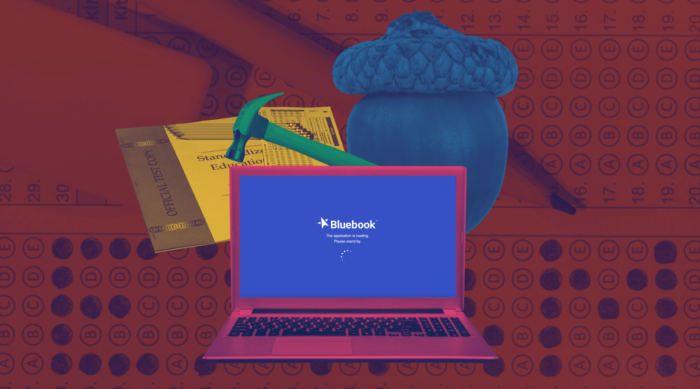Instead of the usual pencil-paper Scantron, as juniors designated classrooms on October 11, instead of the usual pencil-paper Scantron, they pulled out their laptops and opened up Bluebook — the College Board’s premiere application for administering standardized tests. Step Up Day, Wellesley High School’s traditional day for sophomores and juniors to take the respective PreACT and PSAT, had changed.
The most unexpected change of all, however, was not with the test itself but rather with the difficulties that cropped up during it, from individual laptops to entire classrooms. For many students, Bluebook was completely inaccessible.
Although frustrating, the consensus from specialists from the technology office was that it was simply the ordeal of “rolling out” a new program digitally. Despite the hurdles, students and administering faculty at Wellesley favor the new digital format of the PSAT due to its general accessibility. As the only cohort in the high school that has tested both on paper and digitally in Step Up Day so far, many juniors commented positively on the transition.
The computers displayed a clear timer for each student based on when they began and ended each portion of the test, giving the students more ease to pace themselves. As a more convenient counterpart to painstakingly blacking in each bubble, a single click registered an answer. Preparing the PSAT was also easier for testing coordinators, who could efficiently order the digital exam without excessive paperwork and stringent packaging procedures.
Digital literacy in Wellesley, a school district where juniors have already taken the Massachusetts Comprehensive Assessment System (MCAS) digitally since elementary school, was a deciding factor in how seamlessly students adapted to the PSAT. In addition to their similarities, the processes were merely procedural for most students.
In a 2019 study on MCAS, the American Institutes for Research found that students who took it online performed either worse or on par with students who took it on paper. However, in taking the online MCAS again, those differences were minute.
As it transitions the PSAT and the SAT to digital formats, however, the College Board has yet to fully account for student accessibility. Even if it does not greatly impact the high school, which adopts a Bring Your Own Laptop (BYOL) system and has space to provide “loaners” for students who can not bring their own, less robust technological and testing provisions exacerbate inequity for some students.
Students who need testing accommodations have to coordinate with College Board’s Services for Students with Disabilities (SSD), either through their school or family, to have their request granted. Familiar sets of paper accommodations have converted to completely new digital mediums for many with less digital literacy. In addition, if students needed any changes to those provisions, they would have to contact SSD as soon as possible — at the maximum, no later than five days before the test.
Additionally, in the College Board’s own analysis of its digital revamp, its research found that Hispanic students were especially impacted by digitization in a negative way. While a 2009 report concluded that all students generally performed better on English and Social Studies sections of digital tests, compared to other demographics, Hispanic students’ reading scores on the digital SAT did not increase as much as other demographics.
The entire spectrum of test takers can criticize College Board’s own readiness to launch a digital system on a national scale; people agree that there should have been more preparation on its behalf. The precedent that Step Up Day set for digital testing was one in which students directed their scrutiny more toward the administration of the exam than the exam itself.
Virtual transitions will be as erratic as they are common in the near future. All things considered, if the future of standardized testing is virtual (it will be), organizations have to pivot to streamlining access as a matter of selective equity in order to efficiently anticipate needs, from individual students to schools. Digital testing is an idea that works, but the College Board’s foremost responsibility is making it work for everyone.

